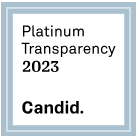Living on $4.38/day Day 2: Settling in
/Eggs for breakfast
Today I woke up hungry. To be honest I can’t tell yet if this is because my normal portion sizes are just way too big or if I didn’t get enough to eat. Nevertheless, this felt like the real start of the challenge, for a couple reasons that I’ll get into in a moment. Today actually went mostly smoothly, but it wasn’t without some interesting observations. Let’s get into it. For breakfast, there wasn’t much choice, it was either eggs or cereal. Fortunately, my wife and I had a chance to have breakfast together, so we went with option B.
"Cheat" lunch
The whole meal (eggs, toast, coffee, creamer, and veggies in the eggs) was $1.83/serving. That’s not bad, though it is almost half of our daily budget. I left this meal feeling pretty satisfied. It’s not actually more than I frequently get in a breakfast, but I knew I was going to be downshifting my daily caloric intake so I ought to not leave myself without fuel. We did this with fancy Omega-3 eggs from cage free chickens that are like $6 or $7/dozen. That price comes down considerably if you go for the regular eggs I grew up on. Breakfast complete, I headed off to work realizing that I’d have to “cheat” for lunch. The rules of this challenge say to try to avoid free food. The only reason I can think of for this is that the more well off you are or the more professional your job setting perhaps the more likely you are to either have people throw food at you all week or at least to have friends who offer you home made carne asada for free after you’ve had a day eating green goo (wait, maybe that last one is just me). I wonder about the premise and how closely these rules match the real life situations of people who get food stamps. I may try to do some research on this point. Still, a friend I am quite fond of had a thing he’d asked me to come to and so I wasn’t going to be the weirdo eating split pea soup while everyone else was enjoying the three courses he had graciously provided.
I skipped the dessert and also tried to eat somewhat light. I imagine that meal would have been about $15, or a quarter of my whole weekly budget. I couldn’t have used Calfresh at the restaurant but you get the point. I was grateful for the kindness of that friend and even learned some tips for financial independence over lunch. But I couldn’t help thinking as I learned about certain ways to leverage the existing rules to lower my tax burden on the backdrop of having food I didn’t pay for that this was like a double whammy of the rich getting richer. This isn’t to call anyone in that room “rich” necessarily (after all, how would I know), but it does seem like it’s pretty easy in my line of work to drift from meal to meal, blissfully not worrying about how much food I do or do not eat.
I occasionally break out my lesson of the pencil reference for my mom when she accuses me of wasting food. “Not so,” I say, “the food isn’t being wasted because whether I eat it or not all of the people who were able to feed their own families because of my purchase have already been paid. So whether I stuff myself or leave some on the plate, it isn’t really being wasted.” If you read that last link you’ll find the lesson and a critique of it. I didn’t have time to check the source, however. By the way, my mom was born in 1933, so she is really having none of my nonsense about the philosophy of food waste. I don’t buy it as much as I did when one of my law professors busted it out the first day of law school, but the lesson does serve a useful purpose. I care deeply about the struggles many people face, and economics lessons helps remind me that not every “solution” to a societal problem actually is a solution – nor necessarily better than the problem it solves. It’s why I think every politician should be required to know something about the law of unintended consequences before they take office. Sometimes we choose to make decisions despite knowing that there will be costs, but term-limited career elected officials rarely need to worry about the negative consequences of policies and as a result we can end up with popular decisions in the short run that have negative consequences that are only born by the people who remain. In the context of food, it’s how some can score cheap points on the backs of poor people because they aren’t made to see how certain policy decisions really do make it harder to get nutritious food. I digress. Back to the food.
Moving on to dinner, we were right back in the saddle on our challenge. It was this:
Dinner Day 2
A tuna melt, vegetables, and water (I include the water mostly because it has been serving as my filler during meals – though, in San Diego at least, the cost of that water is going up with this whole drought thing). The tuna was Wild Planet sustainably pole and line caught albacore tune from Costco. A 5 ounce can costs $2.50 (but can only be purchased as part of a 6-pack for $14.99). I added this part for two reasons. First, it’s important to me to care about how our food gets to our plate, so we try to be thoughtful about it when possible. Second, it is much easier to care about these sorts of things when you can afford an annual Costco membership. I wonder if San Diego Hunger Coalition accepts donations of Costco memberships – or better if Costco would donate group memberships for Calfresh recipients.
The meal was $2.43/serving and I can tell you that without question I linger much more over food when I know it’s all I’ve got for the evening. No sweet nugget afterwards. No big breakfast or windfall of food to look forward to the next day. The biggest takeaway for me on this day happened between meals. I have often heard that the key to health and maintaining a healthy weight is to eat several small meals each day and to never skip breakfast. I decided to pose this question to the oracle (better known as my friends on Facebook). There were several opinions, but a few citations to research. I don’t have time to dig those out now, except this one about the number of meals, but I think you’d be surprised at some of the results. Thanks for reading, have a good day
Blog entry by Omar Passons. To read more about his journey, you can check out eat.drink.give.go.





